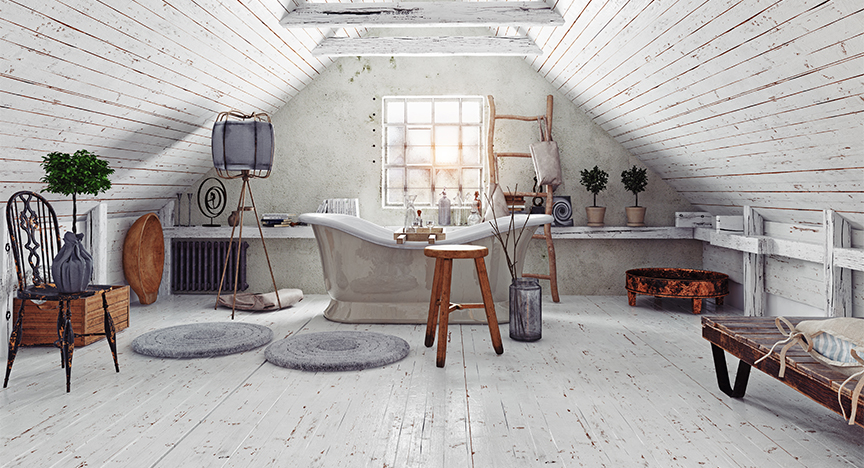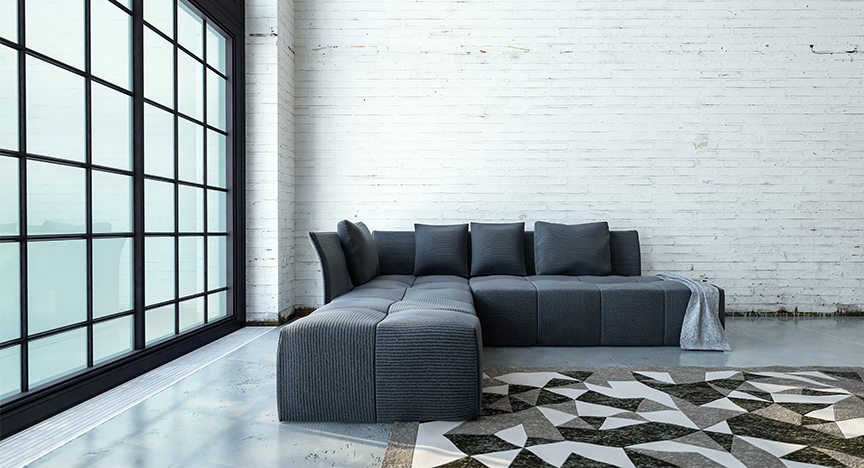Many aspects from the Minimalism movement in the nineties stuck around in the noughties, however, extra colour and personal touches were introduced to make each space feel more homely and unique. This interior design trend was called Shabby Chic, where modern met vintage, and people made more environmentally conscious design choices.
During this decade, fashion and home living united for the first time. Clothing retailer Zara became the first fashion brand to launch interior products for households such as lampshades, bedding and cushions. This new trend was later followed by other well-known fashion brands to offer British people designer home living.
The rise of the flatpack
We still loved the clean lines and cutting-edge design offered by Ikea and its Scandi style. Britain's DIY population was on the increase and the love for flatpack furniture that you could buy and make at your own convenience was growing.
Flatpack furniture had many advantages for both the consumer and the retail manufacturing industry. Mass producing the separate components by machine meant reduced labour costs so products could be sold for much cheaper and enabling people to buy off-the-shelf furniture meant there was much lower shipping and delivery costs.
UK manufacturing began to outsource a large chunk of its labour due to cheaper markets in countries like China and India. While the numbers looked good on paper, soon the unforeseen costs of poor quality, delayed shipping and bad communication started to taint the industry and cheapen the idea of flatpack furniture. Jobs in the manufacturing industry started declining due to this shift in labour, as well as the rise in automation and a skills mismatch.
An era for the environment
In 2001, The Eden Project in Cornwall opened to the public. This project had global aims ‘to create a movement that builds relationships between people and the natural world to demonstrate the power of working together for the benefit of all living things. This movement, along with others throughout the era, placed environmental issues directly in the spotlight and shifted the mindsets of people all over the world to start thinking green.
Green living became a huge trend during this decade. People started considering which products they wanted in their house based not only on look and price but also on the materials used and their impact on the environment. The Shabby Chic trend complemented this movement by encouraging antique-inspired décor, white-washing furniture, and the upcycling of old furniture. Distressed and rustic furniture was considered characterful for homes, adding warmth and detail to a minimalist room.

A social society
Britain was more socially engaged than ever. New social media platforms like Facebook, YouTube, MySpace and Twitter now consumed a significant portion of our time as well as how we communicated with our friends and family. Later in the decade, Android went mainstream, and the first iPhone was launched. A new social experiment on TV also aired transporting families to a brand-new world of viewing. A show called Big Brother captivated us at home with its new concept, featuring eleven isolated contestants in a custom-built house. We watched them compete, argue, relax, eat, and sleep as every moment of the day was recorded.
The 2000s overloaded us with information, and fittingly the UK parliament passed the Freedom of Information Act, giving the public the right of access to information held by public authorities. Over in the U.S. Barack Obama became the first black President, a monumental moment for the whole world and another big step towards creating an equal global society. Back in Europe, the European Union saw an influx of new states join up such as Cyprus, the Czech Republic, Estonia, Hungary, Latvia, Lithuania, Malta, Poland, Slovakia, Slovenia, Bulgaria and Romania.
Times of terror
Generally speaking, the world was moving in a positive direction providing greater accessibility, equality and awareness of our environmental impact on the planet. However, it was also a time of disaster.
On 11th September 2001, four planes were hijacked by Islamic al-Qaeda terrorists and flown into iconic American buildings: the twin towers of the World Trade Center and the Pentagon. Nearly 3,000 lives were lost and thousands more got injured. These horrific scenes were watched all over the world on television and the internet. In response, the U.S., British and other allied forces were sent to Afghanistan to end this reign of fear. The terrorist activity continued throughout the decade with bombings in several countries including the UK. In 2005, Islamists attacked the London Transport Network where a further 52 people were killed and 700 injured.
While these incidents shook the world, nations all over the world united together to end the devastation and crisis. However, in 2008 the UK plunged into a very different crisis altogether. House prices started falling as the demand dropped, trapping homeowners who couldn't afford their mortgage payments or enabling them to sell their houses. Banks stopped lending money and the financial crisis resulted in the Great Recession where more than 1 million British people lost their jobs and thousands of businesses had closed.
No one will forget the noughties
The new Millennium had started all right, the decade brought us highs and lows in abundance. Homes were no longer just spaces for living, they became communication hubs and ways to transport us to new places digitally. The Shabby Chic interior design trend was the beginning of a more globally conscious homeowner and allowed people to express their individual beliefs, showcase what they cared about and feel comfortable in more than just a physical way.






